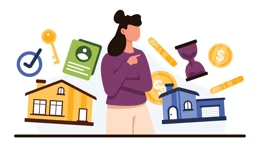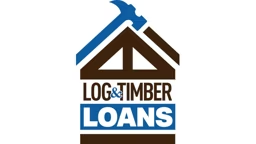Your budget will affect every aspect of your home, from its size to its level of amenities to its location. Meet with a lender or loan officer to find out what you can afford or how to start adding to your log home nest egg. With a dollar figure in mind, you can begin designing and planning for your home.
Building a home from scratch is quite different from buying an existing home. Talk to a lender who has experience with construction lending. The lender will review your financing options and steer you clear of common pitfalls.
Log homes now account for over 6 percent of all custom-built, single-family homes built in the United States. However, financing any custom-built home, whether owner-built or contractor-built on owner's land, presents some unique financing problems. This section reviews the various means of financing a custom-built home and what you can do to make it easier for a financial institution to lend you the money you need to build your home.
See also Understanding Construction Loans
You'll Need Two Loans
Whether you intend to build your new home yourself or have a professional build it for you, chances are you'll need two loans before your new log home becomes a reality. The first is a construction loan that provides money to pay the bills during the building of the home. The second is the standard 15- to 30-year mortgage loan.The two loans are necessary because financing any home--frame, brick or log--that you will build yourself or have built for you on your land has different collateral requirements than financing an existing home.
When financing an existing home, a banker determines the value of the home through an appraisal and then agrees to lend a percentage of the value to you as a mortgage.
The home actually serves as collateral for the mortgage. This collateral is what the bank needs to secure its loan in the event you do not meet the terms of the mortgage.
Financing a home that you want to build or have built on your land is more complex because there's no existing home to serve as collateral, only the potential that a home will exist when construction is complete. In this situation, loan officers require other assets for collateral. They also will want more information about your personal finances and your ability to build the home if you are doing some or all of the work or contracting the work yourself. The other assets can be personal property, such as stocks and bonds, land, cash in savings accounts, or, as we'll see, an agreement by a bank to grant a long-term mortgage loan when the home is completed.
The Mortgage Loan
The 15- to 30-year home mortgage loan is a familiar part of the lives of most families, but qualifying for one can seem mysterious if you haven't been there before. Knowing what financial and personal information is needed and how to pre-qualify yourself before applying for the loan will help take some of the mystery out of the process.Lending institutions will usually insist that you invest at least some of your own money in the home in the form of a down payment before they will grant a long-term mortgage. The more you invest, the better they like it because it reduces their risk. Lending institutions prefer loans with 20 percent down payment from the owner, and they offer better terms to induce you to do so.
However, lenders will make mortgage loans when the borrower has only a small percentage down payment or investment in the home, but these loans require mortgage insurance to reduce the bank's risk. Other factors that lenders consider before making a mortgage loan are the ratio between your income and the expected mortgage payment and the ratio between your income and your total long-term debt.
These ratios vary slightly from individual to individual, but as a general rule, the lending institutions require that the expected monthly mortgage payment cannot be more than 28 percent of your monthly gross family income. This percentage may vary depending on the size of your down payment and your financial situation. The second ratio lenders consider is the ratio between your installment debt payments per month, including the mortgage payment, and your monthly gross family income. In general, this ratio should not exceed 36 percent.
Using these ratios, if your monthly gross family income is $3,000, the maximum mortgage payment the bank will allow would be $840. If you have a car payment of $165, you can still qualify because your installment debt limit is 36 percent of $3,000 or $1,080. Your mortgage payment, plus the car payment, total only $1,005.
There are many other factors that lending institutions consider before making a mortgage loan, so only use the above information as a guide to determine your borrowing ability. Once you have qualified for a mortgage loan, the bank will issue a take-out letter indicating that the construction loan can be paid off with the proceeds of the mortgage loan. With this letter in hand, you are now ready to apply for a construction loan.
The Construction Loan
A construction loan is a short-term loan that is separate and distinct from the long-term mortgage loan. Its purpose is to pay for the materials and labor needed to build your home. These loans are made for periods of six to 18 months and have interest rates a few points over the current prime rate because they are considered riskier than normal, secured loans. They are usually made to professional builders, but are also available to do-it-yourself builders.Still, many lending officers remain wary of making construction loans to individuals. Before granting construction loans, bankers carefully study the project and evaluate the ability of the builder or owner-builder to complete the home according to the plans, budget and schedule. This extra caution is understandable when you realize that you are asking a banker to lend you, an inexperienced builder, money in the expectation that you will build a home that eventually will serve as collateral.
The take-out letter mentioned earlier assures the bank making the construction loan that you have qualified for a mortgage and that the loan will be repaid from the proceeds of the mortgage loan once the construction work is done. This process can be simplified considerably if both the construction loan and the mortgage loan are obtained at the same bank. Fees and paperwork can be reduced, and it will save time.
Construction Draws
Money from your construction loan is not simply credited to your account, as is the case with other loans. Construction loan funds are released in the form of construction draws keyed to the amount of construction work actually completed. In most cases, the money is paid out by the bank in exchange for proof that labor and materials were used to build the home. Progress is verified by on-site inspections conducted at pre-determined intervals during the construction process by an agent of the bank. Each financial institution will have its own rules, but generally, some percentage of the loan will be released as specific points in the building process are reached. For example, once your foundation has been finished and inspected by the bank's agent, the bank will release roughly 25 percent of the loan into your account. This amount should be enough for you to pay for the work up to that point and get started on the next step.
- First Draw on completion of the home's foundation.
- Second Draw on completion of a weathertight house shell.
- Third Draw on installation of electrical, plumbing and HVAC systems.
- Fourth Draw on completion of interior finish and trim and installation of appliances and bathroom fixtures.
- Fifth Draw on completion of house, building and loan inspections.
- Sixth Draw 60 to 90 days after completion or after sufficient time for the filing of mechanics' liens.
Your advantage in this process is that you don't pay interest until the money is dispersed by the bank, then you only pay interest on the amount drawn. If the construction loan is $100,000, for one year at 10 percent, the interest won't end up being $10,000, as might appear to be the case. The interest should only be a small fraction of that amount, since the full $100,000 will not be drawn until the last of the work has been done, usually close to the end of the term.
Package Financing
The construction of a log home presents a slightly different situation to the bank providing the construction financing because you will be purchasing a large percentage of your material, often $25,000 or more, in one package from the log home producer.Log home producers often require a substantial portion of the cost of the package in advance of cutting and delivery. You should avoid making a large down payment on the logs until you have secured financing for the entire home but, once you have your financing, there are several ways to proceed.
Some lenders view a log package as just another load of lumber, or as work under way at the producer's plant, and release funds to pay for it when you and the manufacturer request. In other cases, the bank may refuse to release any money until the package is actually present on your lot. In these circumstances, the bank should issue a promissory note--sometimes called a letter of credit, an assignment form or a voucher check--to the log home producer guaranteeing that payment will be made on delivery. Often the bank can wire transfer the money directly into the log home producer's account the same day that the logs are delivered. Your builder-dealer should be able to help you arrange with the bank and the log home producer for the most convenient financing of the log packages.
See also What is a Log Home Package?
How much can you afford? Use our mortgage calculator to check.






_11868_2024-09-17_08-44-256x288.avif)




